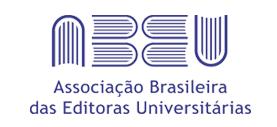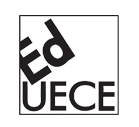VELHOS, NOVOS E MULTILETRAMENTOS: INTRODUZINDO CONCEITOS
Keywords:
Escrita multimodal, Novos letramentos, Multiletramentos, Letramentos digitais, Educação para o LetramentoAbstract
O ensaio busca elucidar conceitos na área de estudos do letramento, situando o leitor quanto às novas práticas multimodais de escrita. Discute a problemática dos novos letramentos numa perspectiva plural e complementar aos letramentos impressos. Introduz conceitos afins e os contextualiza, apresentando definições para fins de ensino e pesquisa. Mostra como surgiu o termo multiletramentos com o New London Group e suas principais implicações educacionais.Downloads
Download data is not yet available.
References
ANSTEY, M.; BULL, G. Definig Multiliteracies. In: ANSTEY, M.; BULL, G. Teaching and Learning Multiliteracies: Changing Times, Changing Literacies. Kensington Gardens- Australia/Newark-DE-US-A:Australian Literacy Educator’s Association-International Reading Association, 2006. p. 19-55.
BRUCE, B. C. Current issues and future directions. In. FLOOD, S. B. H; LAPP, D. (Eds.). Hand-bookof research on teaching literacy through the communicative and visual arts. New York: Simon & Schuster, 1997. p. 875-884.
BUCKINGHAM, D. et al. The Media Literacy of Children and Young People:A review of the re-search literature on behalf of Ofcom. London, University of London. Centre for the Study of Children Youth and Media Institute of Education. BUZATO, M. E. K. Letramento e inclusão: do estado-nação à era das TIC. DELTA: Documentação de Estudos em Linguística Teórica e Aplicada, v. 25, n. 1. São Paulo: Pontifícia Universidade Católica de São Paulo (PUC), 2009. 20 p. Disponível em <http://dx.doi.org/10.1590/S0102-44502009000100001>.
CASSANY, D. ; CASTELLÀ, J. M. Aproximación a la literacidad crítica. PERSPECTIVA. Florianópo-lis: Universidade Federal de Santa Catarina, v. 28, n. 2, p. 353-374, jul/dez. 2010. Disponível em: <http://www.perspectiva.ufsc.br>.
CONDEMARÍN, M. Redefinición de la literacidad y sus implicancias en el rol mediador del profesor frente a la tecnologia digital. Lectura y Vida Año 25, n. 2, p. 24-31, jun.2004.
DIONÍSIO, A. P. Gêneros multimodais e multiletramento. In: KARWOSKI, A. GAYDECZKA, B. BRI-TO, K. (orgs.). Gêneros textuais:Reflexões e Ensino. 2.ed. Rio de Janeiro: Lucerna, 2006. p. 131-144.
EDUCAREDE - Portal Educacional da América Latina. Letramento Digital. Disponível em: <http://www.educared.org.ar/aua/2007/intercambio/acesso>. Acesso em: 23 ago. 2007.
GOMES, L. F. Letramento de professores universitários para usos da escrita em contexto pedagógico digital: algumas reflexões. Revista Crop.FFLCH/USP, v. 12, p. 83-108, 2007.
JENKINS, H. et al. Confronting the Challenges of Participatory Culture: Media Education for the 21 st. Century. Chicago, Illinois, The MacArthur Foundation, 2006. 66 p. Disponível em: < www.digi-tallearning.macfound.org>.
JENKINS, H. Cultura da Convergência. São Paulo: Aleph, 2008.
KLEIMAN, A. B. (Org.) Os Significados do Letramento: Uma nova perspectiva sobre a prática social da escrita. São Paulo: Mercado de Letras, 1995.
KRESS, G. Gains and losses: New forms of texts, knowledge, and learning. Computers and Compo-sitions: An International Journal. Special Issue on the Influence of Gunther Kress’Work. New York: Elsevier Ireland Ltd. v. 22, n. 1, 2005, p. 5-22. KRESS, G. & van LEEUWEN, T. Reading Images: The Grammar of Visual Design. London-New York: Routledge, 2006.
LANKSHEAR, C.; KNOBEL, M. (Editors). Digital Literacies: Concepts, Policies and Practices. New York: Peter Lang Publishing, Inc. 2008.
LEMKE, J. L. Letramento Metamidiático: Transformando significados e mídias. Trabalhos em Linguís-tica Aplicada, v. 49, n. 2, p. 455-479, jul./dez. 2010 [tradução autorizada pelo autor].
LEU, D. J. Jr. et al. The Miss Rumphius effect: Envisionments that transform literacy and learning on the Internet. The Reading Teacher, v. 52, n. 6, p. 636-642. Newark-Delaware: International Reading Association, Mar. 1999.
LEU, D. J Jr.; DONALD J. Literacy and Technology: Deictic Consequences for Literacy Education in an Information Age. In: KAMIL, M. L. et al. (Eds.). Handbook of Reading Research, v.3.Mahwah, London, New Jersey: Lawrence Erlbaum Associates, Publisher (LEA), 2000. p. 743-770.
LEU, Jr, D. J. The New Literacies: Research on Reading Instruction With the Internet. In: FARSTRUP. A. E.; SAMUELS, S. J. (Eds.). What Research has to Say About Reading Instruction. Newark-De-laware: International Reading Association, 2002. p. 310-336.
MARCUSCHI, L. A. Da Fala para a Escrita: Atividades de Retextualização. São Paulo: Cortez Editora, 2001.
REINKING, D. et al. (Editors). Handbook of Literacy and Technology: transformations in a post-typo-graphic world. Mahwah, NJ: Erlbaum, 1998.
SIGNORINI, I. (Org.) Investigando a Relação Oral/Escrito e as Teorias do Letramento. São Paulo: Mercado de Letras, 2001.
SNYDER, I. Antes, agora, adiante: hipertexto, letramento e mudança (Tradução Then, now, next: hiper-text, literacy and change). Educação em Revista,v. 26, n. 3, Belo Horizonte: Bookmark, dez. 2010.
SOARES, M. Letramento: Um tema em Três Gêneros. Belo Horizonte: Autêntica, CEALE, 2000.
SYLVESTER, R.; GREENIDGE, W. Digital Storytelling: Extending the Potencial for Struggling Writ-ers. The Reading Teacher, v. 63, n. 4, dec. 2009/jan. 2010, p. 284-295.
THE NEW LONDON GROUP.A Pedagogy of Multiliteracies: Designing Social Futures. Harvard Educacional Review, v. 66, n. 1, 1996. 25 p. Disponível em: <http://wwwstatic.kern.org/filer/blog-Write44manilaWebsite/paul/articles/A_Pedagogy_of_Multileteracies_Designing_Social_Futures_htm >.
van LEEUWEN, T. Introducing Semiotics Social. London-New York: Routledge, 2005.
VIEIRA, I. L. Inventário de fontes e recursos da Internet para o letramento digital e o ensino da escrita (Projeto IRILDE). Fortaleza, 2007. 27 p.
__________ Tecnologia e Ética no Trabalho Docente: Atitudes e Práticas do Professor na Pós-Moder-nidade. Anais Digitais do IV Encontro Nacional de Hipertexto e Tecnologias Educacionais (ISSN 1984-9117), Universidade de Sorocaba, São Paulo, set. 2011. Disponível em: <http://www.uniso.br/ead/hipertexto/anais/44_IutaLerche.pdf >.
VIEIRA, I. L.; MORAES, R. M. A. Usos da Web 2.0 no Ensino da Escrita e Letramentos Digitais: uma seleção de recursos. Revista EducaOnline v. 5, n. 1, jan/abr. 2011. Laboratório de Pesquisa em Tecnolo-gias da Comunicação e Informação/Escola de Comunicação da UFRJ. Disponível em: <http://www.latec.ufrj.br/revistaeducaonline/numeros.htm >.
BRUCE, B. C. Current issues and future directions. In. FLOOD, S. B. H; LAPP, D. (Eds.). Hand-bookof research on teaching literacy through the communicative and visual arts. New York: Simon & Schuster, 1997. p. 875-884.
BUCKINGHAM, D. et al. The Media Literacy of Children and Young People:A review of the re-search literature on behalf of Ofcom. London, University of London. Centre for the Study of Children Youth and Media Institute of Education. BUZATO, M. E. K. Letramento e inclusão: do estado-nação à era das TIC. DELTA: Documentação de Estudos em Linguística Teórica e Aplicada, v. 25, n. 1. São Paulo: Pontifícia Universidade Católica de São Paulo (PUC), 2009. 20 p. Disponível em <http://dx.doi.org/10.1590/S0102-44502009000100001>.
CASSANY, D. ; CASTELLÀ, J. M. Aproximación a la literacidad crítica. PERSPECTIVA. Florianópo-lis: Universidade Federal de Santa Catarina, v. 28, n. 2, p. 353-374, jul/dez. 2010. Disponível em: <http://www.perspectiva.ufsc.br>.
CONDEMARÍN, M. Redefinición de la literacidad y sus implicancias en el rol mediador del profesor frente a la tecnologia digital. Lectura y Vida Año 25, n. 2, p. 24-31, jun.2004.
DIONÍSIO, A. P. Gêneros multimodais e multiletramento. In: KARWOSKI, A. GAYDECZKA, B. BRI-TO, K. (orgs.). Gêneros textuais:Reflexões e Ensino. 2.ed. Rio de Janeiro: Lucerna, 2006. p. 131-144.
EDUCAREDE - Portal Educacional da América Latina. Letramento Digital. Disponível em: <http://www.educared.org.ar/aua/2007/intercambio/acesso>. Acesso em: 23 ago. 2007.
GOMES, L. F. Letramento de professores universitários para usos da escrita em contexto pedagógico digital: algumas reflexões. Revista Crop.FFLCH/USP, v. 12, p. 83-108, 2007.
JENKINS, H. et al. Confronting the Challenges of Participatory Culture: Media Education for the 21 st. Century. Chicago, Illinois, The MacArthur Foundation, 2006. 66 p. Disponível em: < www.digi-tallearning.macfound.org>.
JENKINS, H. Cultura da Convergência. São Paulo: Aleph, 2008.
KLEIMAN, A. B. (Org.) Os Significados do Letramento: Uma nova perspectiva sobre a prática social da escrita. São Paulo: Mercado de Letras, 1995.
KRESS, G. Gains and losses: New forms of texts, knowledge, and learning. Computers and Compo-sitions: An International Journal. Special Issue on the Influence of Gunther Kress’Work. New York: Elsevier Ireland Ltd. v. 22, n. 1, 2005, p. 5-22. KRESS, G. & van LEEUWEN, T. Reading Images: The Grammar of Visual Design. London-New York: Routledge, 2006.
LANKSHEAR, C.; KNOBEL, M. (Editors). Digital Literacies: Concepts, Policies and Practices. New York: Peter Lang Publishing, Inc. 2008.
LEMKE, J. L. Letramento Metamidiático: Transformando significados e mídias. Trabalhos em Linguís-tica Aplicada, v. 49, n. 2, p. 455-479, jul./dez. 2010 [tradução autorizada pelo autor].
LEU, D. J. Jr. et al. The Miss Rumphius effect: Envisionments that transform literacy and learning on the Internet. The Reading Teacher, v. 52, n. 6, p. 636-642. Newark-Delaware: International Reading Association, Mar. 1999.
LEU, D. J Jr.; DONALD J. Literacy and Technology: Deictic Consequences for Literacy Education in an Information Age. In: KAMIL, M. L. et al. (Eds.). Handbook of Reading Research, v.3.Mahwah, London, New Jersey: Lawrence Erlbaum Associates, Publisher (LEA), 2000. p. 743-770.
LEU, Jr, D. J. The New Literacies: Research on Reading Instruction With the Internet. In: FARSTRUP. A. E.; SAMUELS, S. J. (Eds.). What Research has to Say About Reading Instruction. Newark-De-laware: International Reading Association, 2002. p. 310-336.
MARCUSCHI, L. A. Da Fala para a Escrita: Atividades de Retextualização. São Paulo: Cortez Editora, 2001.
REINKING, D. et al. (Editors). Handbook of Literacy and Technology: transformations in a post-typo-graphic world. Mahwah, NJ: Erlbaum, 1998.
SIGNORINI, I. (Org.) Investigando a Relação Oral/Escrito e as Teorias do Letramento. São Paulo: Mercado de Letras, 2001.
SNYDER, I. Antes, agora, adiante: hipertexto, letramento e mudança (Tradução Then, now, next: hiper-text, literacy and change). Educação em Revista,v. 26, n. 3, Belo Horizonte: Bookmark, dez. 2010.
SOARES, M. Letramento: Um tema em Três Gêneros. Belo Horizonte: Autêntica, CEALE, 2000.
SYLVESTER, R.; GREENIDGE, W. Digital Storytelling: Extending the Potencial for Struggling Writ-ers. The Reading Teacher, v. 63, n. 4, dec. 2009/jan. 2010, p. 284-295.
THE NEW LONDON GROUP.A Pedagogy of Multiliteracies: Designing Social Futures. Harvard Educacional Review, v. 66, n. 1, 1996. 25 p. Disponível em: <http://wwwstatic.kern.org/filer/blog-Write44manilaWebsite/paul/articles/A_Pedagogy_of_Multileteracies_Designing_Social_Futures_htm >.
van LEEUWEN, T. Introducing Semiotics Social. London-New York: Routledge, 2005.
VIEIRA, I. L. Inventário de fontes e recursos da Internet para o letramento digital e o ensino da escrita (Projeto IRILDE). Fortaleza, 2007. 27 p.
__________ Tecnologia e Ética no Trabalho Docente: Atitudes e Práticas do Professor na Pós-Moder-nidade. Anais Digitais do IV Encontro Nacional de Hipertexto e Tecnologias Educacionais (ISSN 1984-9117), Universidade de Sorocaba, São Paulo, set. 2011. Disponível em: <http://www.uniso.br/ead/hipertexto/anais/44_IutaLerche.pdf >.
VIEIRA, I. L.; MORAES, R. M. A. Usos da Web 2.0 no Ensino da Escrita e Letramentos Digitais: uma seleção de recursos. Revista EducaOnline v. 5, n. 1, jan/abr. 2011. Laboratório de Pesquisa em Tecnolo-gias da Comunicação e Informação/Escola de Comunicação da UFRJ. Disponível em: <http://www.latec.ufrj.br/revistaeducaonline/numeros.htm >.
Downloads
Published
2019-09-30
How to Cite
VIEIRA, I. L. VELHOS, NOVOS E MULTILETRAMENTOS: INTRODUZINDO CONCEITOS. Linguagem em Foco Scientific Journal, Fortaleza, v. 4, n. 1, p. 81–92, 2019. Disponível em: https://revistas.uece.br/index.php/linguagememfoco/article/view/1953. Acesso em: 5 dec. 2025.
Issue
Section
Essays
License
Copyright (c) 2019 Iúta Lerche Vieira

This work is licensed under a Creative Commons Attribution 4.0 International License.
Authors who publish in Linguagem em Foco Scientific Journal agree to the following terms:
- Authors retain the copyright and grant the journal the right of first publication. The articles are simultaneously licensed under the Creative Commons Attribution License which allows sharing the work with an acknowledgement of its authorship and initial publication in this journal.
- The concepts issued in signed articles are the absolute and exclusive responsibility of their authors. Therefore, we request a Statement of Copyright, which must be submitted with the manuscript as a Supplementary Document.
- Authors are authorized to make the version of the text published in Linguagem em Foco Scientific Journal available in institutional repositories or other academic work distribution platforms (ex. ResearchGate, Academia.edu).

























